Best Practices Articles

Mastering Partner Relationship Management (PRM): Strategies, Challenges, and Insights
In today's competitive business landscape, fostering strong relationships with partners has become paramount for sustainable growth. This is where partner relationship management (PRM) comes into play. PRM is not just a buzzword; it's a strategic approach companies adopt to streamline and optimize their interactions with channel partners. With the rise of global markets and the increasing complexity of sales channels, businesses recognize the need for a systematic approach to manage these crucial relationships. Partner Relationship Management (PRM) software provides a centralized platform, offering tools and resources that ensure partners are equipped, engaged, and motivated to drive sales and represent the brand effectively.
As companies expand their reach, the challenges of managing diverse partners across different regions, languages, and business models become evident. This is where solutions like those offered by ZINFI, emphasizing a unified partner management system, become invaluable. The goal is clear: creating a win-win scenario where the company and its partners thrive. But how does one implement, integrate, and measure the success of a partner relationship management strategy? And more importantly, how can businesses ensure that their teams and partners fully embrace these systems? These are the questions we aim to address in the subsequent sections.
What is partner relationship management (PRM)?
Partner relationship management (PRM) is a strategic approach to managing and optimizing the interactions between a company and its channel partners. It encompasses a set of strategies, processes, and tools that enable businesses to collaborate effectively with their partners, ensuring that both parties benefit from the relationship. Partner Relationship Management aims to create a seamless and efficient partnership experience, fostering stronger relationships, better communication, and increased sales and revenue. Read more.
A PRM system, like the one offered by ZINFI, provides a platform where companies can create a mobile-responsive partner portal. This portal serves as a one-stop shop for partners to navigate through various partner programs, access relevant content and campaigns, and understand the programs they are eligible for. By centralizing partner-related activities and information, PRM ensures that partners have all the resources they need to succeed, increasing partner satisfaction and loyalty.
What are the critical features of PRM software?
Partner Relationship Management (PRM) software is designed to streamline and enhance the partner management process. Critical features of PRM software, as highlighted by ZINFI, include:
- Mobile-Responsive Content Creation: Partner Relationship Management software allows companies to set up mobile-responsive content easily accessible by partners on any device.
- Dynamic Content Management: Companies can dynamically update, manage, and distribute content to their partners, ensuring partners always have access to the latest information and resources.
- Program Promotion and Tracking: PRM software enables businesses to promote their partner programs and track utilization. This ensures that partners are aware of the opportunities available to them and that companies can measure the success of their partner initiatives.
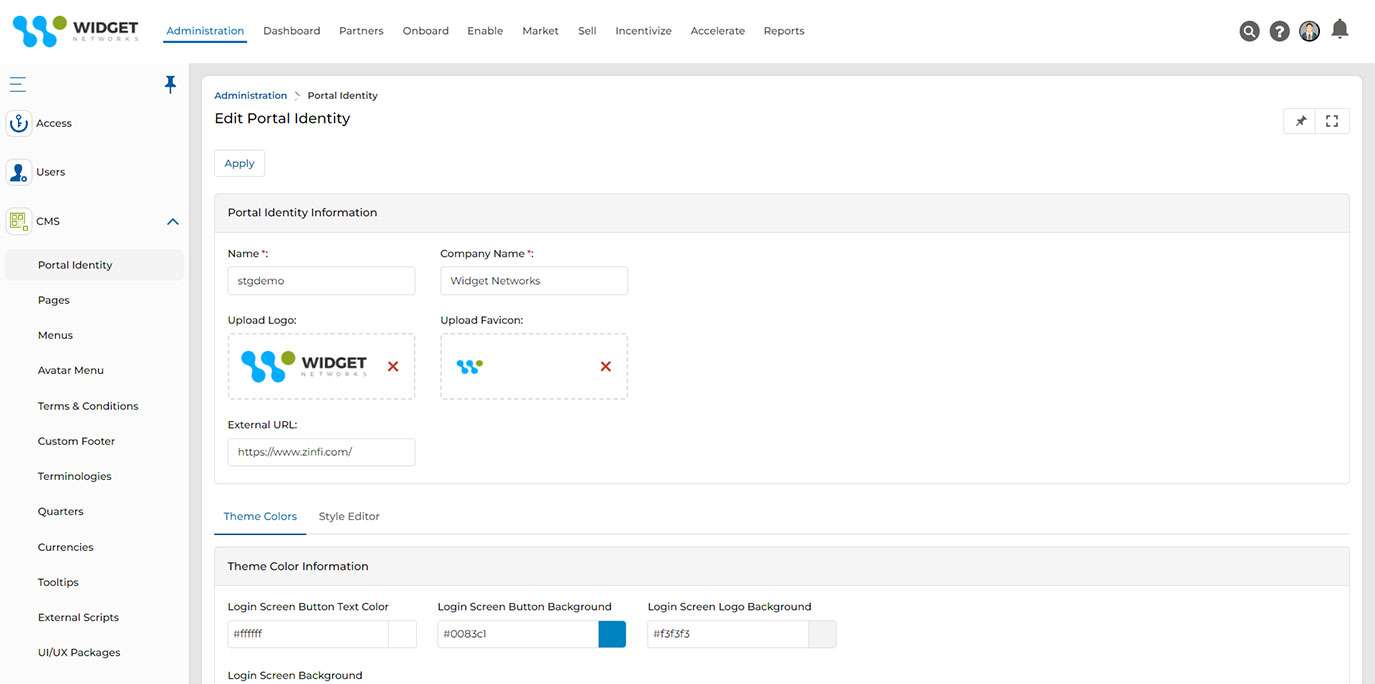
How do you implement PRM software successfully?
Successfully implementing PRM software requires a strategic approach including the following steps:
- Needs Assessment: Before selecting a PRM solution, companies should assess their current partner management processes and identify areas that need improvement.
- Choose the Right Software: It’s essential to select a partner relationship management platform that aligns with the company's unique requirements and offers features like mobile-responsive content creation, dynamic content management, and program promotion and tracking.
- Training: Once the software is selected, companies should provide comprehensive training to internal teams and partners to ensure adoption and effective utilization.
- Regular Updates: To keep the content relevant and up to date, companies should regularly update the content and resources available on the PRM platform.
- Feedback Loop: Establish a feedback mechanism where partners can share their experiences and suggestions for improvement. This will help in refining the PRM processes over time.
How do you use PRM software to increase partner sales?
Organizations can significantly boost partner sales by leveraging partner relationship management software in the following ways:
- Provide Relevant Content: Ensure that partners have access to the latest product information, sales tools, and training materials. This will equip them with the knowledge and resources they need to sell effectively.
- Promote Partner Programs: Actively promote partner programs through the PRM platform, highlighting the benefits and incentives for partners.
- Track Performance: Use the PRM software to track partner sales and performance. This data can be used to identify high-performing partners and provide them with additional support and incentives.
- Collaborative Marketing: Use the PRM platform to collaborate with partners on marketing campaigns, co-branded content, and other promotional activities.
- Regular Communication: Maintain regular communication with partners through the PRM platform, updating them on new products, promotions, and other relevant information.
How do you use PRM software to manage partner relationships effectively?
Effective management of partner relationships is crucial for business growth and success. Partner relationship management (PRM) software offers a centralized platform to streamline and enhance these relationships. To use PRM software effectively, follow these practices:
- Centralized Communication: Use the PRM platform as the primary mode of communication with partners. This ensures all interactions are documented and easily accessible, fostering transparency and trust.
- Segmentation: Categorize partners based on criteria like region, product specialization, or sales volume. This allows for targeted communication and resource allocation, ensuring that partners receive relevant information and support.
- Resource Allocation: Provide partners with easy access to sales tools, training materials, and marketing resources through the PRM platform. This empowers them to represent your brand effectively and close deals more efficiently.
- Feedback Mechanism: Implement a feedback system within the PRM software. Regular feedback from partners can provide insights into areas of improvement, ensuring that the partnership remains fruitful.
- Performance Tracking: Monitor partner performance metrics like sales volume, lead conversion rates, and training completion. This data can guide decisions on resource allocation, training needs, and incentive programs.
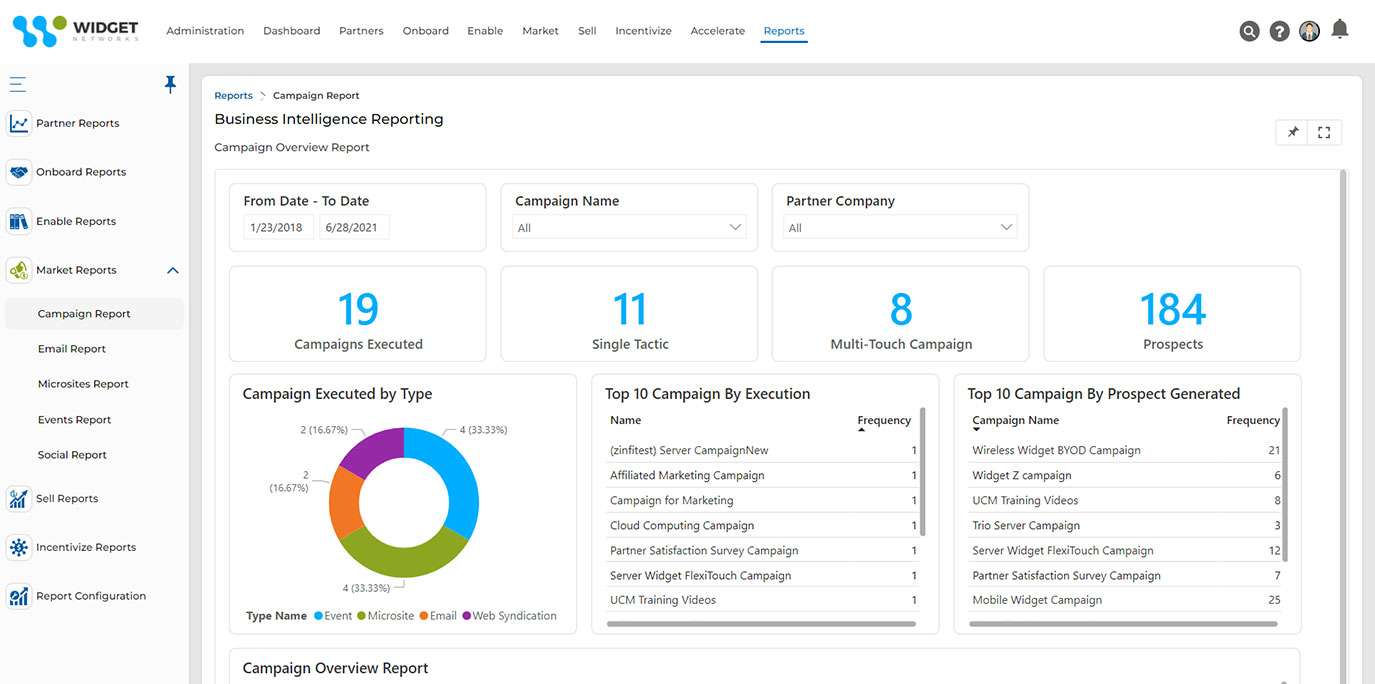
How do you measure the success of your PRM strategy?
Measuring the success of a partner relationship management (PRM) strategy involves analyzing both quantitative and qualitative metrics:
- Partner Engagement: Monitor the frequency and quality of partner interactions on the PRM platform. High engagement levels indicate that partners value the resources and support provided.
- Sales Metrics: Track partner-driven sales, lead conversion rates, and average deal sizes. An increase in these metrics indicates a successful PRM strategy.
- Training Completion: Monitor the completion rates of training modules and certifications. High completion rates suggest that partners are invested in enhancing their product knowledge and skills.
- Feedback and Satisfaction: Regularly survey partners to gauge their satisfaction levels. Positive feedback and high satisfaction scores are indicative of a successful PRM strategy.
- Partner Retention and Growth: Measure the number of partners retained year-over-year and the growth in new partner acquisitions. A growing and loyal partner base suggests that the PRM strategy is effective.
What are the different types of PRM software?
While the core objective of all partner relationship management (PRM) software is to manage and optimize partner relationships, they can be categorized based on functionality and use case:
- Channel Management PRM: Focuses on managing multiple sales channels, tracking sales metrics, and providing resources to channel partners.
- Training and Certification PRM: Emphasizes partner education, offering training modules, webinars, and certification programs.
- Marketing PRM: Provides tools for co-branded marketing campaigns, lead distribution, and marketing resource allocation.
- Performance Analytics PRM: Prioritizes tracking and analyzing partner performance metrics, offering insights and recommendations for improvement.
- Collaboration PRM: Facilitates collaboration between partners and the company, offering tools for joint business planning, deal registration, and shared calendars.
How much does PRM software cost?
The cost of partner relationship management (PRM) software varies based on several factors:
- Functionality: Comprehensive PRM solutions with advanced features and integrations are more expensive than basic platforms.
- Number of Users: Some PRM vendors charge based on the number of users or partners.
- Customization: Customized solutions tailored to specific business needs and might incur additional costs.
- Implementation and Training: Software implementation, data migration, and training costs can add to the overall price.
- Subscription Model: PRM software is often offered as a subscription service, either monthly or annually. The pricing model, whether tiered or flat-rate, can influence the cost.
It's essential to evaluate the specific needs of your business, request demos, and obtain quotes from multiple vendors to determine the most cost-effective PRM solution for your organization.
What are the challenges of PRM?
Partner relationship management (PRM) is a powerful tool for optimizing and managing partner relationships. However, like any strategic initiative, it comes with its set of challenges:
- Complexity of Partner Ecosystem: Companies often deal with diverse partners spanning different regions, languages, and business models. As highlighted by ZINFI, managing content, campaigns, and applications across various user groups, partner types, languages, regions, and territories can be complex.
- Content Management: Creating a mobile-responsive partner portal – which ZINFI explains in more detail here – requires continuous efforts to update, manage, and distribute content dynamically to partners. Ensuring that partners always have access to the latest and most relevant content can be challenging.
- Engagement and Utilization: Even with a highly functional, mobile-responsive partner portal, promoting and tracking the utilization of partner programs can be a hurdle. Ensuring partners are actively engaged and maximizing the resources provided is crucial.
- Integration with Existing Systems: Integrating PRM software with other business systems, like CRM or ERP, can pose technical challenges.
- Training and Adoption: Ensuring that internal teams and partners are adequately trained and using the PRM system to its full potential is another challenge.
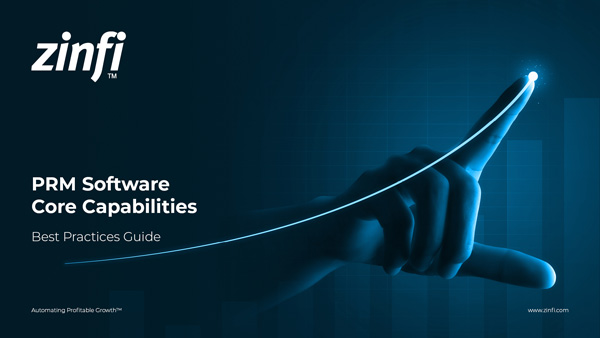
Download the best practices guidebook.
How to integrate PRM software with CRM?
Integrating partner relationship management (PRM) software with customer relationship management (CRM) systems can amplify the benefits of both platforms. Here's are the steps required to complete this integration:
- Needs Assessment: Understand the specific data and processes that must be integrated between the PRM and CRM systems. This could involve lead distribution, sales tracking, partner performance metrics, and more.
- Choose Compatible Systems: Platforms like ZINFI offer unified partner management tools that work seamlessly with popular CRM systems. Ensure that the PRM software you choose is compatible with your CRM.
- Data Mapping: Determine how data will flow between the two systems. For instance, leads generated in the PRM might need to be reflected in the CRM for sales tracking.
- Technical Integration: Employ APIs or middleware solutions to establish a connection between the PRM and CRM systems. This might require specialized expertise or collaboration with software vendors.
- Testing: Before going live, test the integration thoroughly to ensure data flows correctly and there are no glitches.
- Training: Train your teams on the integrated system, ensuring they understand how data and processes flow between PRM and CRM.
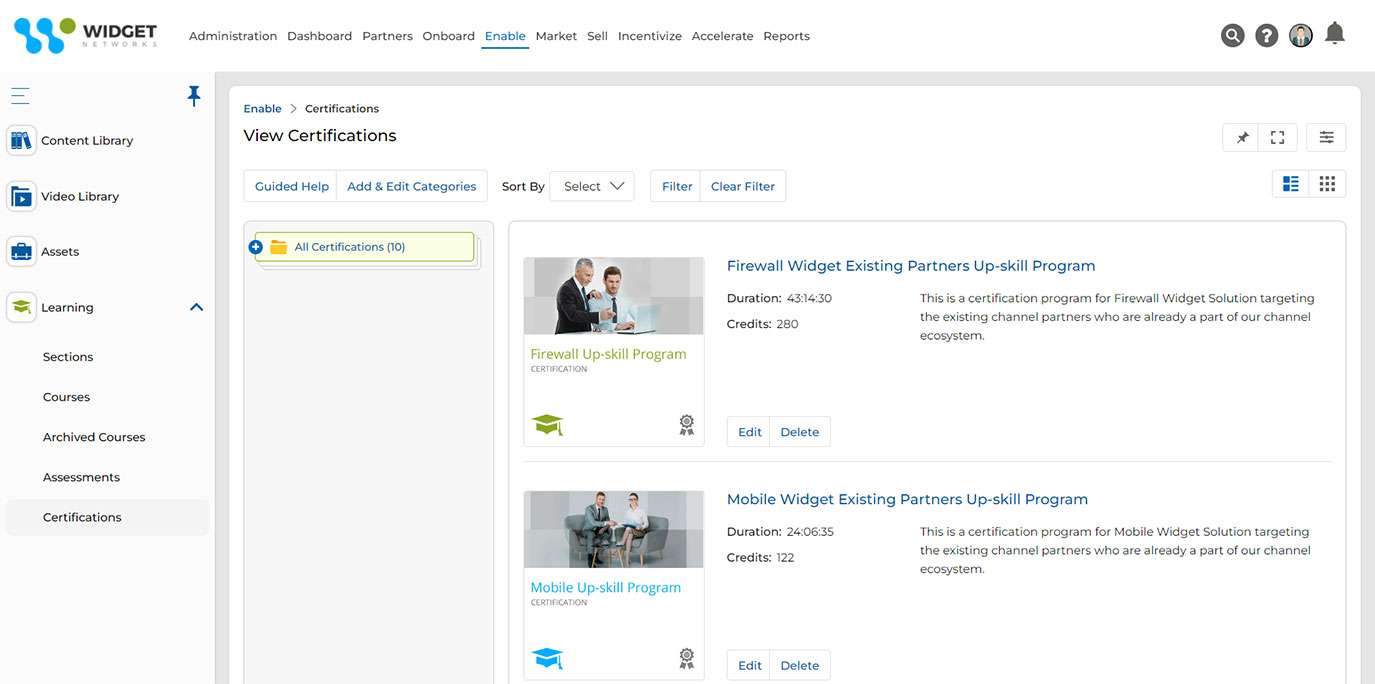
How to get buy-in for PRM from your sales team?
Achieving buy-in for partner relationship management (PRM) from the sales team is crucial for the system's success. Here's how to approach it:
- Showcase Benefits: Highlight how PRM, like the solutions offered by ZINFI, can make the sales process more efficient. Emphasize features like the mobile-responsive partner portal, which can provide partners with easy access to content and campaigns, aiding the sales process.
- Training Sessions: Organize comprehensive training sessions, ensuring the sales team understands how to use the PRM system effectively.
- Feedback Loop: Encourage the sales team to provide feedback on the PRM system. This makes them feel involved and can provide valuable insights for system optimization.
- Success Stories: Share success stories or case studies where PRM systems have led to increased sales, better partner relationships, or more efficient sales processes.
- Align with Sales Goals: Ensure the PRM system aligns with the sales team's goals and targets. If sales personnel see the PRM as a tool to help them achieve their objectives, they are more likely to embrace it.
While PRM systems offer immense benefits, addressing challenges, ensuring seamless integration with existing systems, and achieving buy-in from crucial stakeholders for maximum effectiveness is essential.

Conclusion
Partner relationship management (PRM) is complicated, encompassing strategies, tools, and best practices to fortify the bond between businesses and their channel partners. As we've seen in our exploration of the intricacies of PRM, successful implementation can be a game-changer for businesses. By leveraging platforms like ZINFI's unified partner management system, companies can navigate the complexities of diverse partner ecosystems, ensuring that every partner, irrespective of their region or business model, feels valued and empowered.
However, the journey continues after implementation. Continuous engagement, regular feedback, and consistent training are pivotal to harnessing the full potential of PRM, as are achieving integration with other business systems and securing buy-in from key stakeholders, especially the sales team.
In today's dynamic business environment, where partnerships can make or break a company's success, PRM emerges as a tool and a philosophy that underscores the importance of collaboration, mutual growth, and shared success. For businesses aspiring to scale new heights, investing time, effort, and resources in PRM isn't just an option; it's a necessity.
For more information, please check this article.
Best Practices Guidebook
 Startup Talent Recruitment: Hiring Missionaries, Not Mercenaries
Startup Talent Recruitment: Hiring Missionaries, Not MercenariesDownload for FREE
 The Future of Partner Relationship Management with AI in Partnerships
The Future of Partner Relationship Management with AI in PartnershipsDownload for FREE
 Cybersecurity for the 99%: Strategies from the Frontline
Cybersecurity for the 99%: Strategies from the FrontlineDownload for FREE
 Mastering Partner Relationships: A Strategic Approach to Business Growth
Mastering Partner Relationships: A Strategic Approach to Business GrowthDownload for FREE
 The Smart Manufacturing Playbook: Industry 4.0 Transformation
The Smart Manufacturing Playbook: Industry 4.0 TransformationDownload for FREE
 Mastering Partner Relationship Management: Keys to SaaS Channel Success
Mastering Partner Relationship Management: Keys to SaaS Channel SuccessDownload for FREE
 Navigating the AI Revolution: Guide for Partners in the Microsoft Ecosystem
Navigating the AI Revolution: Guide for Partners in the Microsoft EcosystemDownload for FREE
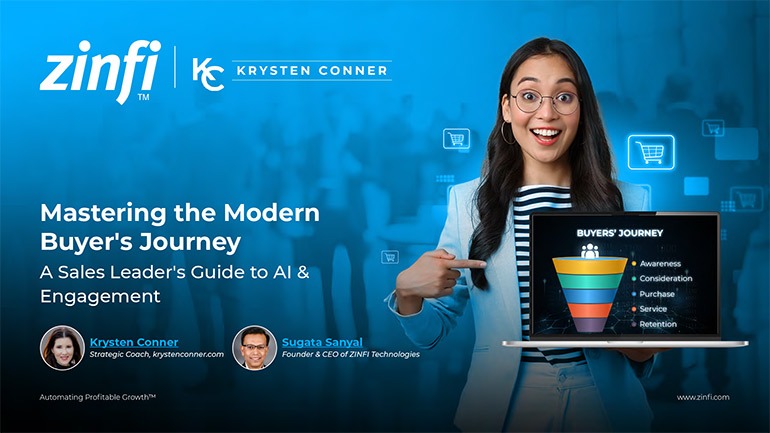 Mastering the Modern Buyers Journey: Sales Leader’s Guide to AI & Engagement
Mastering the Modern Buyers Journey: Sales Leader’s Guide to AI & EngagementDownload for FREE
 Hybrid Cloud and Edge AI Computing Impacting the Future of PRM
Hybrid Cloud and Edge AI Computing Impacting the Future of PRMDownload for FREE
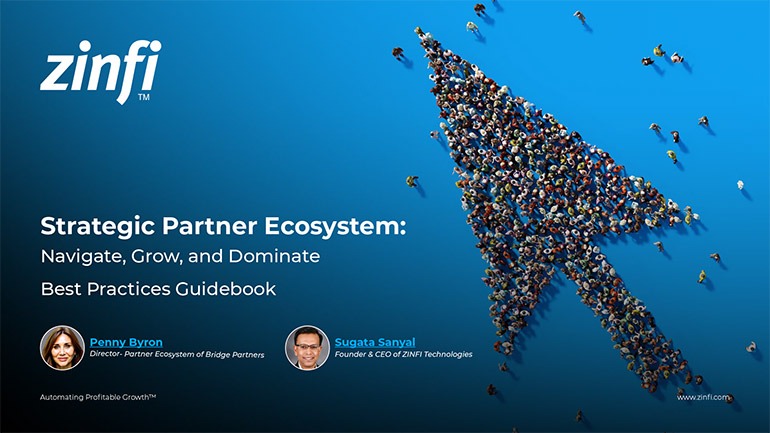 Strategic Partner Ecosystem: Navigate, Grow, and Dominate
Strategic Partner Ecosystem: Navigate, Grow, and DominateDownload for FREE
 Cloud Marketplaces: Leader’s Guide to Unlocking Growth and AI Innovation
Cloud Marketplaces: Leader’s Guide to Unlocking Growth and AI InnovationDownload for FREE
 Getting More From Partner Performance: Guide to Measuring What Matters
Getting More From Partner Performance: Guide to Measuring What MattersDownload for FREE
 Guide to Modern Partner Relationship Management & Ecosystem Growth
Guide to Modern Partner Relationship Management & Ecosystem GrowthDownload for FREE
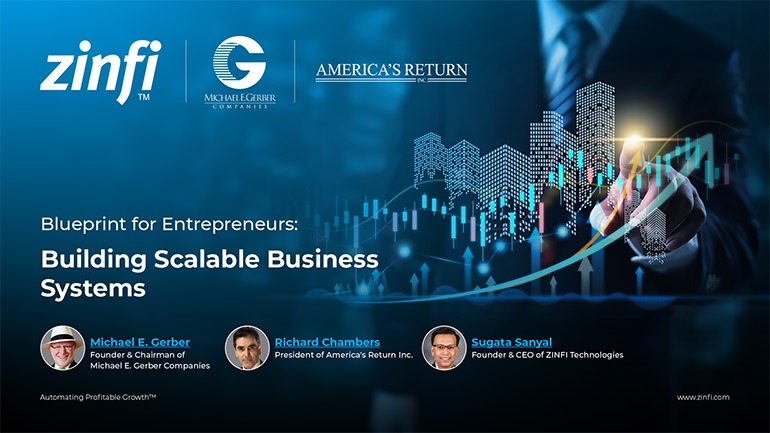 Debunking the Entrepreneurship Myth Best Practices
Debunking the Entrepreneurship Myth Best PracticesDownload for FREE
 AI-Powered PartnerOps: The Next RevOps Frontier Best Practices
AI-Powered PartnerOps: The Next RevOps Frontier Best PracticesDownload for FREE
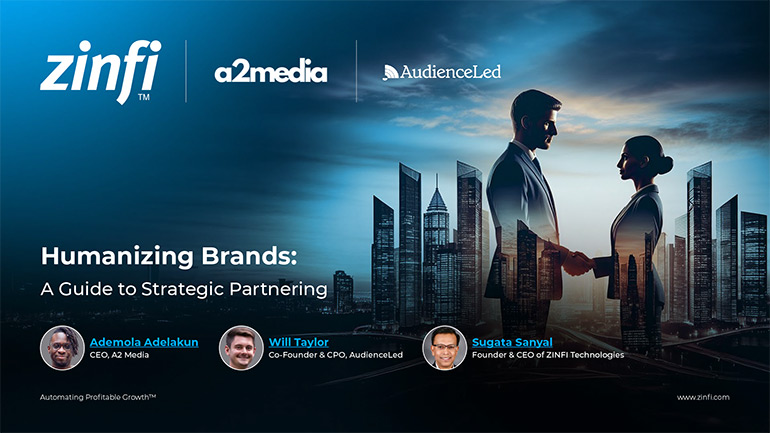 Humanizing Brands: Guide to Strategic Partnering Best Practices
Humanizing Brands: Guide to Strategic Partnering Best PracticesDownload for FREE
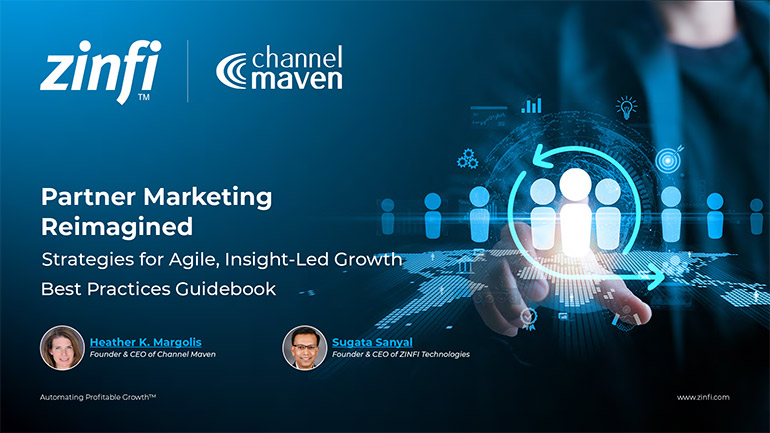 The AI-Powered Partner Ecosystem Best Practices
The AI-Powered Partner Ecosystem Best PracticesDownload for FREE








